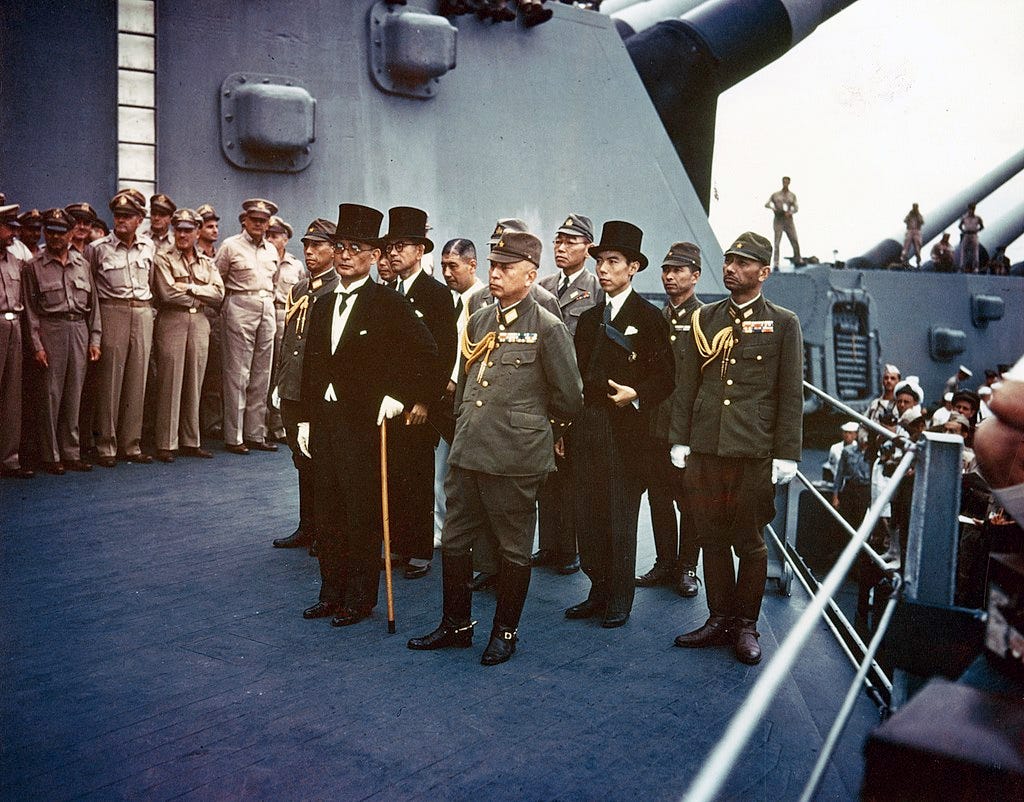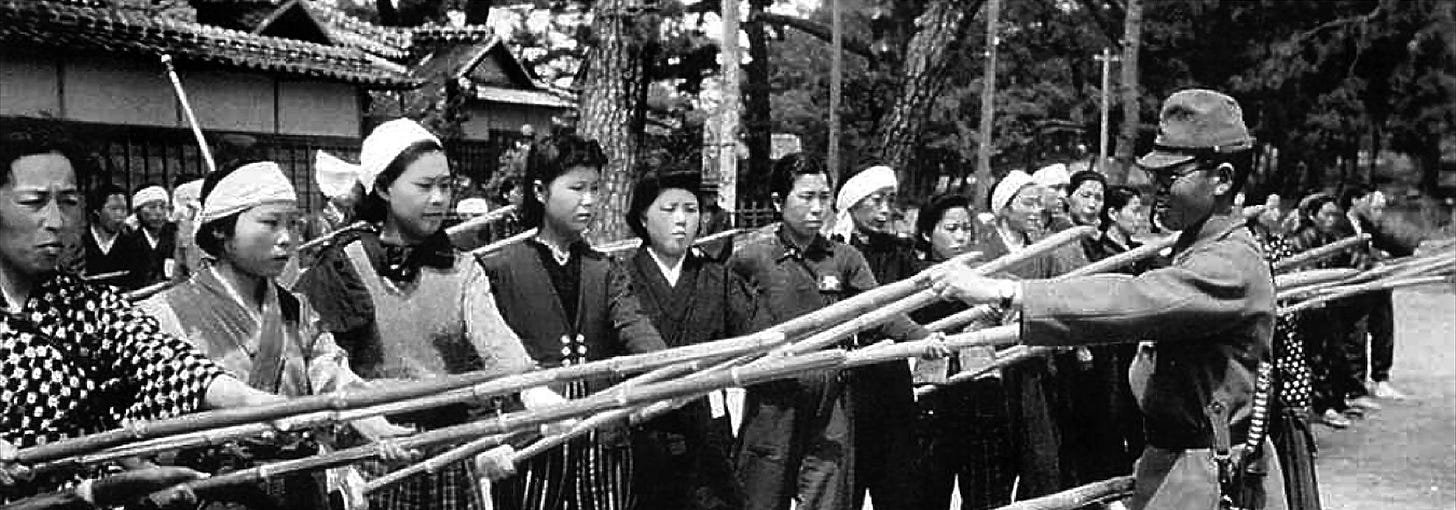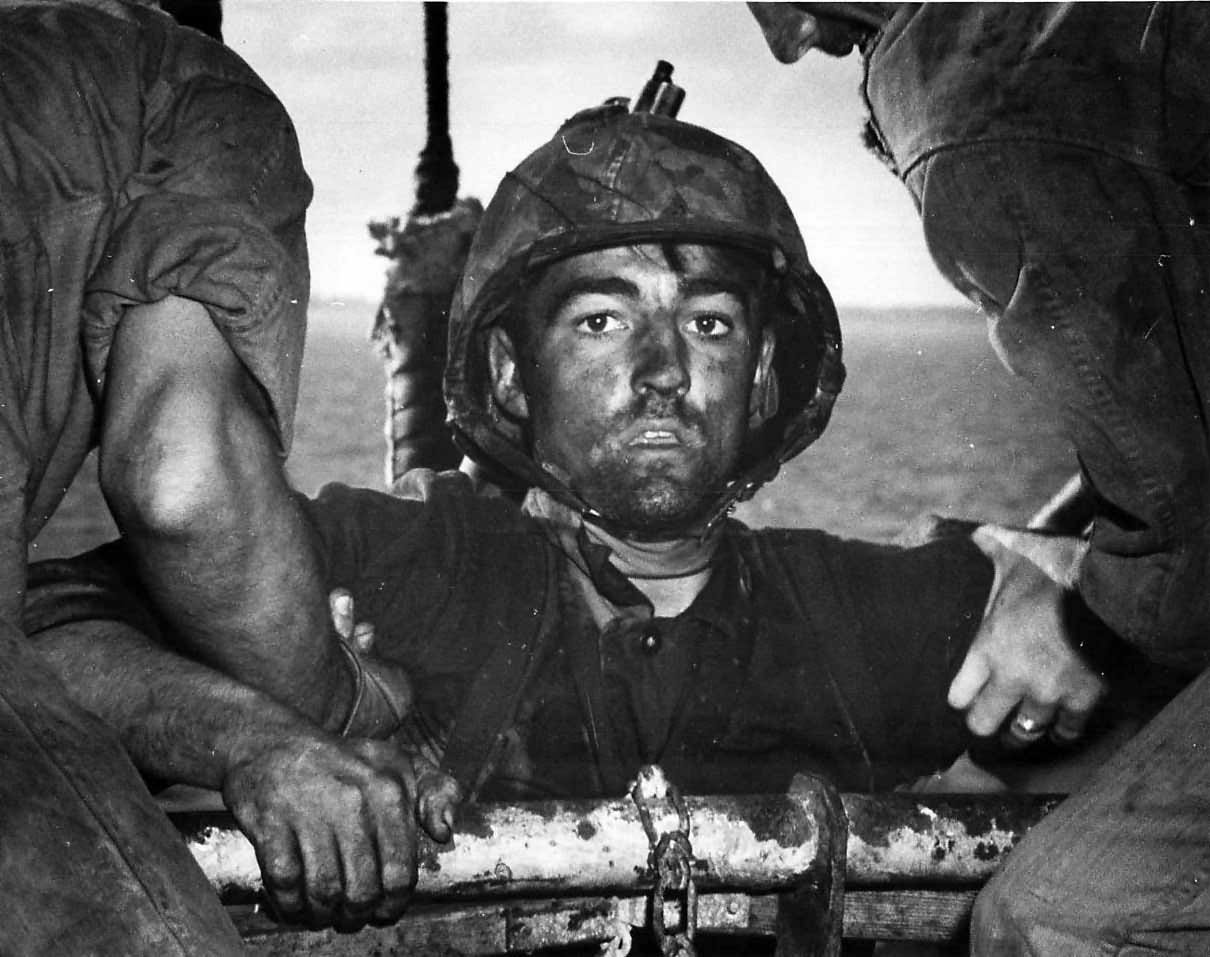The series of political and military decisions leading up to the end of the war in the Pacific were complicated. The American firebombing campaign against Japanese cities led to a few influential members of the Japanese circle of leadership, including the emperor, to desire a negotiated peace with the Allies.[1] They put it out through non-diplomatic connections in neutral countries in Europe that Japan may be open to a negotiated peace, however the governments of both sides were generally skeptical. After the surprise attack on Pearl Harbor, Kamikaze attacks, death marches in the Philippines, and nearly four years of bloody no-quarter warfare in the Pacific, a negotiated peace was a simply a non-starter for Americans.

Japanese leaders also reached out to Moscow in hopes to perhaps negotiate a peace deal through the Soviet Union with whom they had a non-aggression treaty. Desperate Japanese diplomats hoped that perhaps Soviet leader Stalin would realize that they had done them a huge favor by not going to war against the Soviet Union, thereby allowing it to wage a single front war against Germany. The Japanese also realized that since the war had ended in Europe there was tension between the Western Allies and the Soviets. Japan was willing to make big concessions including territories that they had occupied in China, maritime claims, and deliveries of raw materials, in exchange for a Soviet negotiated deal or perhaps even an alliance between the Soviets and Japan against the West.[2] The Japanese soon realized that any help from the Soviets was a lost hope. In the final days of the war Stalin declared war on Japan and easily seized large swaths of Japanese occupied territory in China.
While some in Japanese leadership were clandestinely sending out peace feelers in 1945, Japanese military leadership was preparing the nation to commit national Hara Kiri. Japanese armed forces were locked in a suicidal struggle that had as its stated goal the taking of as many American lives as possible for every yard of Japanese occupied territory. The results of this type of fighting were appalling with extremely high casualty counts for both land and naval forces at Peleliu, Iwo Jima, and Okinawa. The American public reacted to the Japanese Kamikaze attacks and mounting body counts with rage. A Gallup opinion poll in June-July 1945 found that around seventy percent of the U.S. public favored either executing Emperor Hirohito outright or putting him on trial and then either executing him or imprisoning him for life. These facts influenced American political decisions regarding the prosecution of the war in the Pacific – and President Harry Truman’s choice to use the atomic bomb.
While some in top American circles believed that a naval blockade combined with conventional strategic bombing could bring Japan to her knees (General “Hap” Arnold, and Admiral William Leahy), most American politicians and military leaders believed that the Allies would have to invade and occupy the Japanese home islands to achieve unconditional surrender. They estimated that if casualty counts similar to Okinawa occurred in the Kyushu invasion alone it would equate to around 268,000 dead and wounded, and that thirty to fifty percent of the American invasion fleet could be knocked out prior to landings by Kamikaze attacks.[3] On Okinawa less than three Japanese infantry divisions, cut off from resupply, and without aerial support held out for over a hundred days against an American force more than twice as strong.[4] Across their home islands Japanese military leaders amassed a force of fifty-three infantry divisions and twenty-five combat brigades, over 2.35 million men, to meet the Allies. Eventually this force was bolstered by millions more as every able-bodied man from fifteen to sixty and every woman from seventeen to forty-five were conscripted into homeland defense forces. Many were armed with sharpened bamboo poles and suicide bombs. To the fighting men in the Pacific it was a nightmare to think what would happen when they landed in the Japanese home islands.

After atomic weapons were used at Hiroshima and Nagasaki, there was a scramble amongst Japanese leadership with some openly suggesting what had only been discussed behind closed doors – the unthinkable option of surrender. The same convoluted Japanese system of government (which the U.S. never truly understood) that made the decision to go to war now could not bring itself to accept surrender even if it meant the preservation of the monarchy in some form. Surrender was not an option through the traditional methods due to the lack of consensus among Hirohito’s cabinet members. Many believed that surrender would destroy Yamato Damashii (the Japanese spirit) and Kokutai (national essence) and that it was correct to defy the Emperor’s desire for peace, as it was a mistaken and ill-advised judgment; in the mind of these men true faithfulness to the Emperor made temporary disobedience imperative.[5] Peace and unconditional surrender did not become a viable option until the Emperor broke tradition, spoke directly to his cabinet ministers, and said in no uncertain terms that he desired “...that all of you, my ministers of state, bow to my wishes and accept the Allied reply [demand for unconditional surrender in response for suggestions of a negotiated peace] forthwith.”[6] Had Hirohito not taken this action, it is likely that the war would have continued with even more devastating results for his people and the allied armies martialed against them.
On 8 August we heard that the first atomic bomb had been dropped on Japan. Reports abounded for a week about a possible surrender. Then on 15 August 1945 the war ended. We received the news with quiet disbelief coupled with an indescribable sense of relief. We thought the Japanese would never surrender. Many refused to believe it. Sitting in stunned silence, we remembered our dead. So many dead. So many maimed. So many bright futures consigned to the ashes of the past. So many dreams lost in the madness that had engulfed us. Except for a few widely scattered shouts of joy, the survivors of the abyss sat hollow-eyed and silent, trying to comprehend a world without war.
Eugene B. Sledge, With the Old Breed: At Peleliu and Okinawa.[7]

References
[1] E. Bartlett Kerr, Flames Over Tokyo: The U.S. Army Air Forces' Incendiary Campaign Against Japan 1944-1945 (New York, NY: Donald I. Fine Inc, 1991), 284-286.
[2] John Toland, The Rising Sun: The Decline and Fall of the Japanese Empire, 1936-1945 (Random House Publishing Group. Kindle Edition, 2003), Kindle Locations 16900-16909.
[3] Ronald H. Spector, Eagle Against the Sun: The American War with Japan (Free Press. Kindle Edition, 1985), Kindle Locations 9519-9528.
[4] Ibid. Kindle Locations 9524-9528.
[5] Ibid. Kindle Locations 18332-18335.
[6] Toland. Kindle Locations 18609-18613.
[7] Eugene B. Sledge, With the Old Breed: At Peleliu and Okinawa (Random House Publishing Group. 2007), 317.



